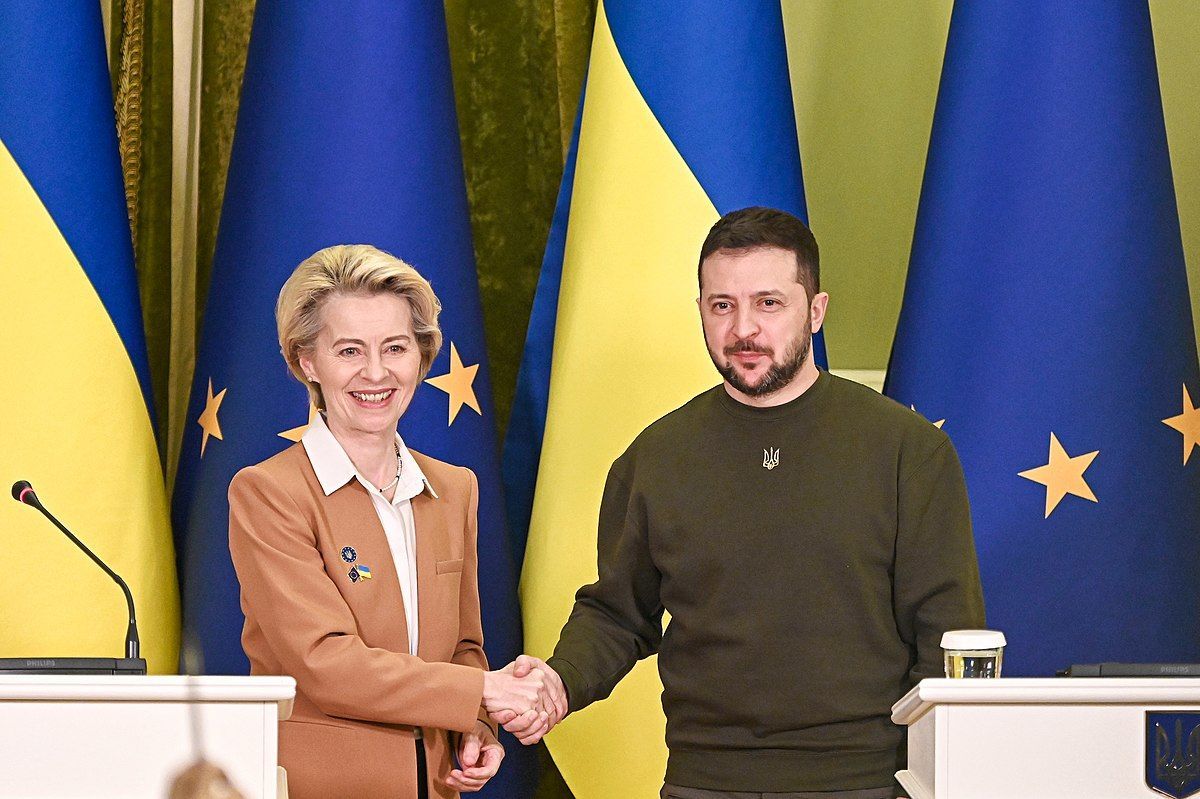6 March 2021
The Doha deal has set the stage for the withdrawal of all remaining US troops in Afghanistan but the Biden administration may prolong the American military presence in search of a better settlement.
With the 1 May deadline looming for the withdrawal of the remaining 2,500 American troops in Afghanistan, Joe Biden must face one of his first major foreign policy tests as president of the United States. The deadline stands according to a deal struck between the Trump administration and the Taliban in February, last year. The deal enables Washington to finally end two decades of US military involvement in Afghanistan, but a total withdrawal risks empowering the Taliban to seize victory over the Afghan government based in Kabul.
Biden has inherited an unenviable choice: withdraw now and risk leaving the door open for a Taliban victory, or stay on and gamble that the Taliban will be willing to extend the withdrawal deadline and that the US will be able to leave Afghanistan later with something more closely resembling a success. In short, Biden must choose between two bad options – the difficulty will be determining which is worse.
Details which have emerged this week indicate that the Biden administration is planning to remain in Afghanistan past the 1 May deadline with the intention of reaching a new political settlement more in line with American interests. Reaching this settlement will likely involve trilateral negotiations between the US, the Afghan government and the Taliban. However, it is highly questionable whether the Taliban, now in a position of strength, will be willing to enter further negotiations or make any serious concessions.
Is the Doha agreement a good deal?
The Doha deal, officially the ‘Agreement for Bringing Peace to Afghanistan’, was signed on 29 February 2020 between the US and the Taliban. The deal consists of four main parts. In brief: Part One establishes a timeline for the withdrawal of US and foreign forces from Afghanistan; Part Two stipulates that the Taliban must not harbour terrorist groups who pose a threat to the US and its allies; Part Three sets out that the Taliban will engage in an intra-Afghan dialogue with the Afghan government and an agenda to reach a ‘permanent and comprehensive ceasefire’ at this dialogue is established by Part Four.
In principle, the Doha deal is fairly solid. The previous administration was realistic enough to accept that the Taliban are stakeholders in Afghanistan’s future - however deplorable they may be - and that Washington would have to negotiate with them to lay the groundwork for an American withdrawal. The deal also sets out the ends necessary for an acceptable resolution to the US’s military involvement in Afghanistan, namely that the country is not used as a base for terrorists to attack the West and that the Taliban work with Kabul to construct a permanent ceasefire and work towards building a more stable, prosperous Afghanistan.
However, the Doha deal is not without serious flaws. The previous administration was wrong to exclude the Afghan government from these negotiations. Leaving Kabul out of the talks sent entirely the wrong message and undermined the central government, when Washington should instead have been promoting Kabul as the most important stakeholder in Afghanistan’s future. Historically, the central government has always struggled to assert control far beyond its base in Kabul, but it was unwise for the US to undermine it further.
Worse still, has been the implementation of the Doha deal by the previous administration. According to the terms of the deal, the US withdrawal is dependent on the Taliban fulfilling their side of the bargain. However, reports have indicated that the Taliban have defied the terms of the deal by permitting Al Qaeda members to operate in their territory. A report released in January this year by the United Nations Analytical Support and Sanctions Monitoring Team indicates that there are between 200-500 Al Qaeda fighters operating in approximately 11 provinces in Afghanistan.
President Trump continued to withdraw US forces from Afghanistan despite these transgressions until his time in the White House was over. This completely undermined the conditional basis of the deal and turned what should have been a conditional withdrawal by US forces into an orderly retreat. The previous administration’s unconditional withdrawal has left Washington in a weaker bargaining position and has made it all the more difficult to secure a satisfactory conclusion from the deal.
The question now is whether the Biden administration can reimpose the conditions of the deal upon the Taliban or whether Washington should just cut its losses and leave according to the 1 May deadline. The deal itself is workable, but the previous administration has signalled to the Taliban that they can act with near-impunity – as long as they do not attack US troops – and the US will still withdraw its forces. This outcome has not laid the groundwork for securing long-term US security interests in the region, nor has it left the vulnerable Afghan government in a position of strength.
The case for staying in Afghanistan
If US forces adhere to the 1 May deadline for withdrawal, the primary risk is that the Taliban will be in a strong position to claim victory in Afghanistan. Long-term observers of the region will be aware of the danger of history repeating itself. When the USSR withdrew all its forces from Afghanistan in 1989, the Soviet-backed People’s Democratic Party of Afghanistan (PDPA, then known as the Homeland Party) struggled to survive until April 1992 when Mujaheddin forces claimed Kabul. Policymakers in Washington should be sure that the present government in Afghanistan will not suffer the same fate before withdrawing its remaining forces.
So, how good are the Afghan government’s odds for survival if the US fully withdraws its forces in May? In January last year, Afghanistan’s president, Ashraf Ghani told reporters from CNBC that a withdrawal of US troops would have ‘no material impact’ on the Afghan police and military’s ability to provide security in the country and that ‘the Afghan security forces have emerged (as) a significant force.’ Whether or not Ghani’s optimism is justified will depend on several factors.
Although the US and NATO formally ended their combat missions in Afghanistan on 28 December 2014, Afghan forces still depend on support from the US military to counter more significant Taliban assaults. Air power is arguably the most important aspect of this assistance. For example, US aircraft dropped a total of 783 munitions in Afghanistan during the month of August 2019 to repel offensives by the Taliban aimed at capturing Kunduz and several urban centres. At the same time, representatives from the US and the Taliban met in Qatar to discuss a possible ceasefire. Uncertainty that the Taliban will honour a possible ceasefire with the government in Kabul presents a strong argument in favour of the US maintaining at least a residual presence of aircraft and support staff to assist Afghan security forces should a fragile peace crumble.
Even if the Afghan forces can take on the responsibility for providing security alone, they will still need funding, and a significant chunk of that funding comes from the American taxpayer. Approximately 90 percent of the Afghan security forces’ annual budget comes from one of three funding streams from the international community: the US Afghanistan Security Forces Fund (ASFF); the NATO-run Afghan National Army (ANA) Trust Fund and the United Nations Development Programme’s Law and Order Trust Fund for Afghanistan (LOTFA). There is a risk that when US and allied troops fully withdraw from the country, funding will also start to wither and the Afghan security forces will not have access to the necessary means to stave off Taliban offensives, launched without fear of reprisals from the US.
Another risk is that a premature withdrawal will perpetuate the civil war in Afghanistan. The Taliban may not be able to capture Kabul if Afghan security forces are indeed capable of holding the line without US support, but if the insurgents are able to capture vast swathes of territory in the country, they will have little incentive to come to the negotiating table. Despite the Doha deal having been signed in February 2020, the Taliban intensified attacks against the Afghan government in the months that followed. According to the Special Inspector General for Afghanistan Reconstruction (SIGAR), offensives against Afghan government forces ‘stayed well above historic norms’ between April and June last year. In these circumstances, even if the Taliban decided to enter negotiations with the Afghan government, Kabul would be at a serious disadvantage during talks and would have to make a choice between concessions or further conflict.
The Biden administration must also think about signalling. If the US withdraws and the security situation in Afghanistan crumbles, it will look a lot like an American defeat. So far, the Taliban have been the real winners of the Doha deal. Their goal of a full withdrawal of foreign forces from Afghanistan is within grasp and yet they have been able to attack Afghan security forces and continue cooperating with Al Qaeda without facing serious consequences. The Doha deal in its inception is a workable deal, but in practice all it has achieved thus far has been to allow US forces to withdraw from the country without the Taliban shooting at them as they do so. This hands command of the narrative firmly to the Taliban and will serve to inspire global terror networks and jihadi groups that they can defeat the US.
The case for leaving Afghanistan
The most pessimistic argument for leaving Afghanistan is that the US is fighting a lost cause and should cut its losses sooner rather than later. If all hopes of securing a positive outcome are gone, what possible reason could there be to prolong the costs and risks associated with maintaining a military presence in the country? According to this perspective, the 1 May deadline presents an opportunity for the US to finally end its costly misadventure in Afghanistan.
Perhaps the greatest vice associated with Washington’s involvement in Afghanistan and the Greater Middle East was hubris. Following the events of 9/11, bolstering US security by conducting counter-terror operations abroad was a necessary strategy, but this was confused by vague notions of nation building and exporting democracy overseas. Clearly, the Taliban’s links to Al Qaeda posed a threat and the US alongside Afghanistan’s Northern Alliance were able to rapidly remove the Taliban from power by December 2001. It was after the success of this offensive to topple the Taliban that the US started to make major mistakes in Afghanistan.
Any notions that the US would leave Afghanistan as a new Switzerland were obviously misplaced. Afghanistan has been enveloped in a complex blend of competing ethnic-tribal, regional, religious, and cultural conflicts since at least 1973, when Mujahedin groups took up arms against the rule of Mohammed Daoud Khan’s one-party state. For the US to reshape a complex paradigm of conflict which has defined the country’s internal politics for decades was a very tall order from the beginning. Westerners tend to forget that Afghanistan has been in a state of on and off war well before the Soviets or the Americans set foot in the country.
Nevertheless, if the US ever could help to produce an acceptable political outcome in Afghanistan, they missed their window – by a longshot. In December 2001, a conference was held at Bonn to form a temporary government that would hold power in Afghanistan for 6 months until a Loya Jirga (a traditional Afghan legal assembly) would convene to establish a transitional authority that would hold power until elections took place. The Taliban were excluded from talks at Bonn and the subsequent Loya Jirga which took place in June 2002.
Talks with the Taliban should have taken place when they were at their weakest at Bonn, the Loya Jirga, or shortly thereafter, not more than a decade later when they have emerged as a strong force in Afghanistan once more. Shortly after their defeat in 2001, Taliban leaders may have been willing to cooperate and give serious concessions in return for a place at the table. As a general rule, it is preferable to talk to your enemy when you are in a position of strength to impose your terms, not the opposite.
Of course, it is all to easy to point to this window of opportunity in hindsight. Negotiating with the Taliban under any circumstances raises uncomfortable moral questions. Policymakers may also have felt that the Taliban were incapable of resurging after their rapid fall from power in 2001 and any negotiations with them were therefore unnecessary. However, if realists in Washington had realised that the Taliban would remain key stakeholders in Afghanistan, they may have forged a more sustainable political situation in Afghanistan and been able to exit more quickly and cleanly.
The problem now is that it would require a significant military operation to diminish the Taliban to the level of power they held in the aftermath of initial US operations in 2001. There is zero political appetite to do this in the US, whatsoever. Equally, there is very little desire from the government in Kabul to undertake such an operation. Therefore, it is questionable that the US will be able to achieve a better outcome by prolonging their military presence beyond the 1 May deadline.
Another danger to consider is that a failure to withdraw by 1 May could invite renewed targeting of US and allied troops by the Taliban. So far, the Taliban have refrained from attack US and other foreign troops on the basis that they will soon be withdrawing anyway. Taliban attacks have almost exclusively been aimed at Afghan government and civilian targets. However, their incentive to refrain from attacking US troops would no longer remain if Washington announced that they are staying.
What happens next?
A meeting on 1 March between Zalmay Khalizad, the US’s top envoy for peace to Afghanistan, and Abdullah Abdullah, who is at head of the Afghan government’s peace talks, may indicate what to expect next from the Biden administration.
According to the Wall Street Journal, Khalizad has proposed a peace conference to be held between the Afghan government and the Taliban with the aim of establishing an interim government. The format of this conference would replicate its predecessor held in Bonn, Germany in 2001, except this time the Taliban would be invited as key stakeholders. If the conference took place, US forces would retain a residual presence past the 1 May deadline until a firmer political settlement is reached.
Unfortunately, Khalizad is nearly two decades late with this proposal. In the best-case scenario, the Taliban would agree to the talks. However, the now-resurgent Taliban are presently in a position of relative strength to demand serious concessions in return for peace. The Taliban would either leave negotiations with a strong position in the new government or Kabul would be forced to walk away and the war would resume with renewed intensity. It is hard to imagine the Taliban’s vision for an Islamic government being somehow reconciled with Kabul’s more secular and democratic aspirations.
The worse case scenario is of course that the Taliban would flatly refuse to attend the conference, having used the abandonment of the Doha deal and the prolonged presence of US troops past 1 May as a pretext to renew their offensives both against the Afghan government and US and NATO forces.
The State Department has not yet laid out the new administration’s foreign policy in Afghanistan, so for now Khalizad’s proposal remains just that, a proposal. What is clear is that the new administration is not content with the outcomes of the Doha deal as they are playing out now. A different direction therefore seems likely and Khalizad’s proposed conference is a policy option that Washington may decide to take.











